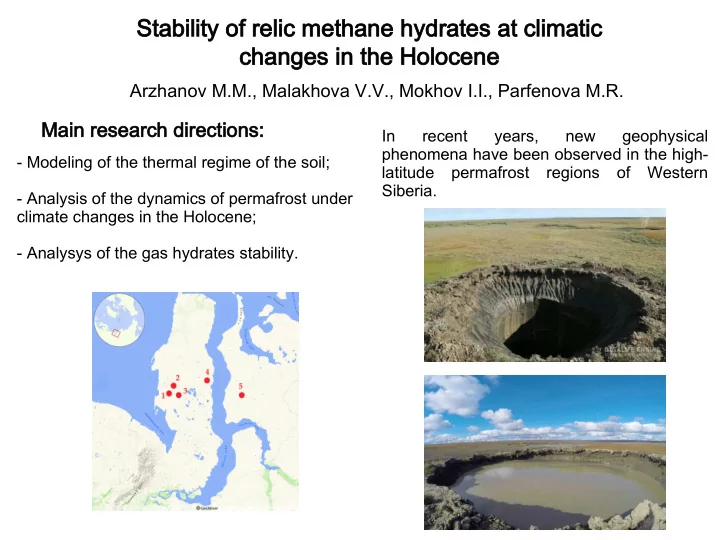

Sta tabil ility ity of reli lic meth thane hydrate tes at clim climatic tic changes in in th the Holocene Arzhanov M.M., Malakhova V.V., Mokhov I.I., Parfenova M.R. Main in r research ch dir irect ctio ions: s: In recent years, new geophysical phenomena have been observed in the high- - Modeling of the thermal regime of the soil; latitude permafrost regions of Western Siberia. - Analysis of the dynamics of permafrost under climate changes in the Holocene; - Analysys of the gas hydrates stability.
Numerical e l experiments ts - Model of thermal processes in the soil [Malakhova and Eliseev, 2017] - External atmospheric forcing based on Global climate model CLIMBER-2 [Ganopolski et al., 2010] - Heotermal flux 0.06 W m -2 [Davies, 2013] Air temperature anomalies in Yamal region [Ganopolski et al., 2010] Air temperature in Yamal region Current regional warming may exceed the magnitude of the year Holocene optimum warming.
Modeli ling o of th f the th thermal r regim ime o of th f the s soil Soil temperature, o C depth, m depth, m T, o C x10 3 years The results obtained indicate that at present time, stable and relict methanhydrates might have persisted at negative temperatures below -7 °С for the last 10 thousand years, including the optimum Holocene preiod, and still might exist in the frozen soil of Yamal at depths of up to 150 m, which is above the modern boundary of the stability zone. The disruption of their stability might be a consequence of ongoing climate change.
Recommend
More recommend